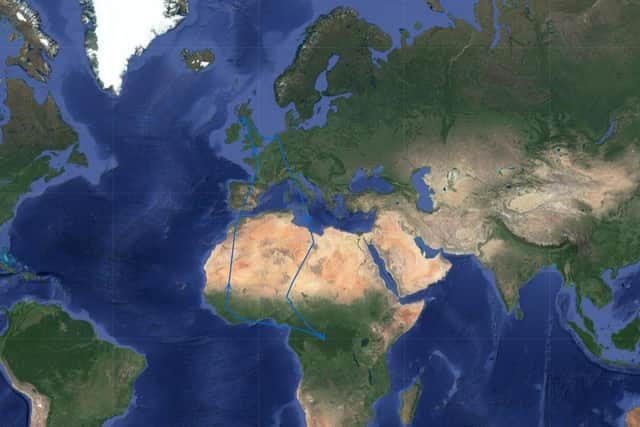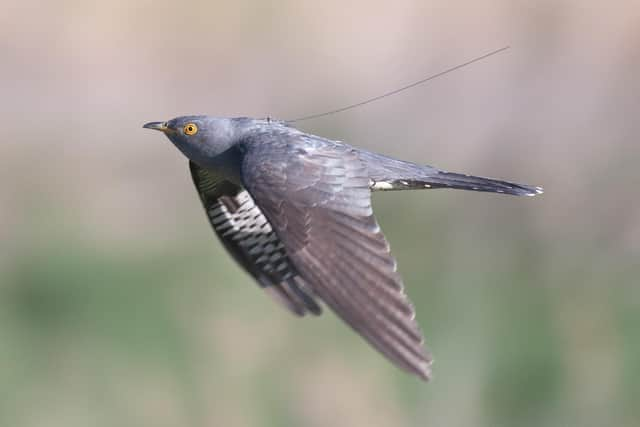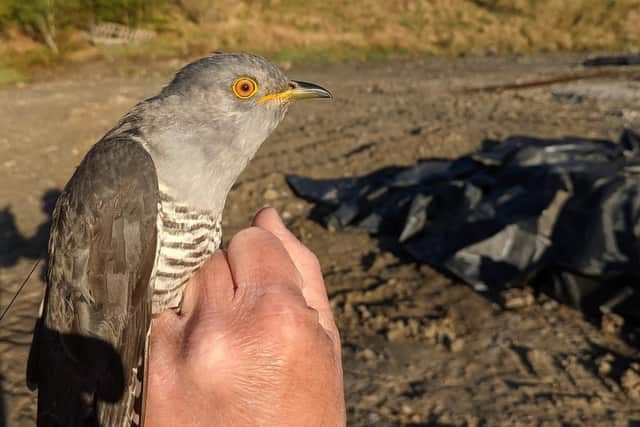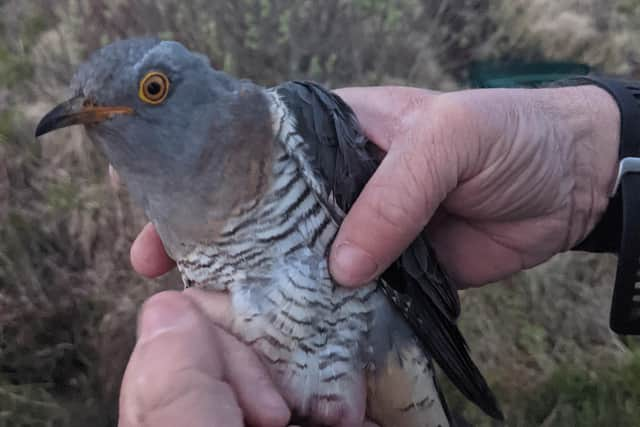Meet the Scottish superbird who won a 10,000-mile race to be the first tagged cuckoo to fly from Africa to the UK this year
The superbird, named Ellis, is one of a number of cuckoos which have been fitted with transmitters to track their movements as part of a project by the British Trust for Ornithology (BTO).
Eliis, who was tagged last year, set off from the Congo basin and arrived in Ghana on 1 February.
Advertisement
Hide AdAdvertisement
Hide AdOn 31 March he crossed the Sahara and pushed on northwards into Spain.
He became the first of the BTO’s current group of cuckoos to make it back to the UK on 18 April, when he touched down at his breeding grounds on the shores of Loch Arklet, in Loch Lomond and the Trossachs National Park.
And a second Scottish bird, Victor II, was not far behind.
He left his wintering area in Gabon on Christmas Day and moved gradually northwards until reaching Ghana on 15 March.
His own Sahara crossing began on 13 April, before stopping off in England on 1 may and then finally landing at Loch Katrine – not far from Ellis’s territory – two days later.


The cuckoo – named for its distinctive call – is currently on the Red List of Birds of Conservation Concern in the UK due to population declines.
BTO researchers have been satellite-tracking cuckoos since 2011 in a bid to find out why they are disappearing.
The two Scottish birds are among 12 currently being monitored and which will shortly up sticks and set off back to Africa.


Tom Stewart, from the British Trust for Ornithology, said: “Across the UK, we’ve lost over 70 per cent of our breeding cuckoos since the late 1960s.
Advertisement
Hide AdAdvertisement
Hide Ad“The picture is different in Scotland, however, where recent decades have seen significant increases.
“Although the reasons for this are unclear, the tracking data has revealed that birds breeding in different parts of the UK take different routes on migration.
“Understanding the pressures they face on these long journeys, often through regions impacted by drought, could hold the key to explaining what’s going on.


“Insect declines may also play a part.
“We’re tagging more cuckoos this year to add to our growing knowledge of these beguiling birds and to help safeguard their future here in the UK.”
Cuckoos are unusual birds, known as ‘brood parasites’.
Instead of building their own nests, females lay their eggs in the nests of other species – especially meadow pipits, dunnocks and reed warblers – with the eggs produced to mimic those of the invaded bird.
This makes it more difficult for scientists to monitor breeding success for cuckoos.


It’s not known whether Ellis or Victor II have fathered any chicks since they were tagged in 2021.
Mr Stewart added: “It isn’t easy to track how many eggs a female cuckoo lays because they are deposited in the nests of other birds.
Advertisement
Hide AdAdvertisement
Hide Ad“We know that the eggs of each female cuckoo are adapted to look like those of one host species – one bird will lay eggs that look like those of a meadow pipit, another that look like those of a reed warbler and so on.”
Comments
Want to join the conversation? Please or to comment on this article.
